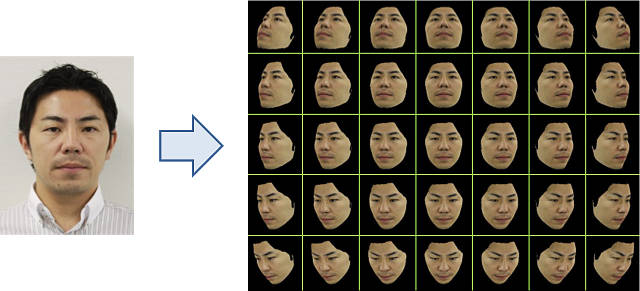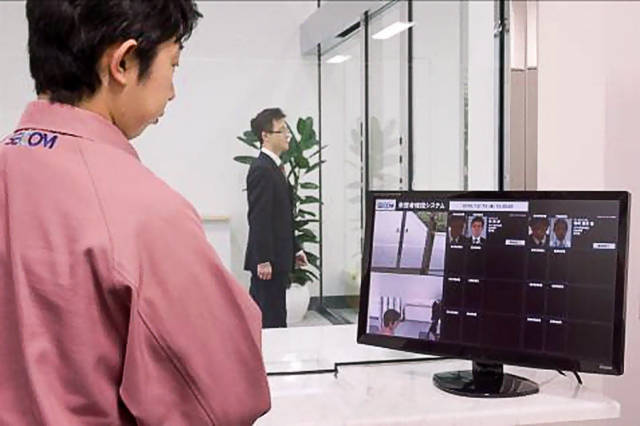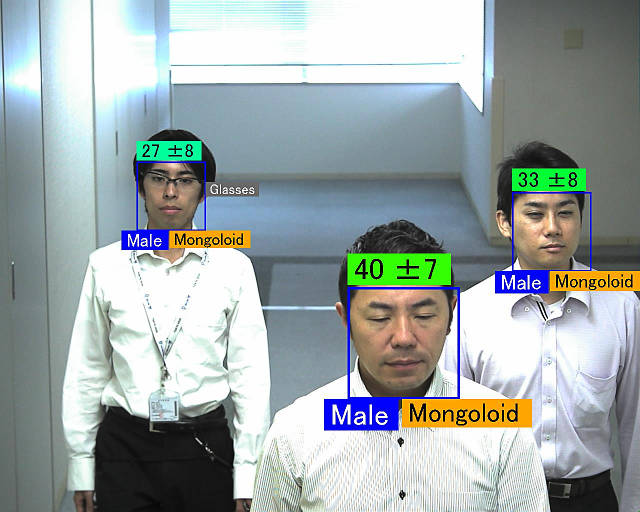
People can recognize each other by looking at each other's faces. In addition to recognizing a person, faces include attribute information such as age, gender and even emotions.
In our research, we are developing technologies for secure and convenient services using facial attributes. Attributes are useful for facial recognition, but changes in expression, the direction that a person is facing, and ambient lighting are all factors that increase the difficulty of recognition. To solve these problems, we use three-dimensional (3D) face representations.
3D face representations allow us to create virtualized faces whose appearance changes under different conditions. By determining which features change under different conditions, unique individualistic changes can be identified.
Typically, a specialized 3D scanner is usually used to create 3D face representations. However, we have developed a method to create 3D representations from two-dimensional images. This technology incorporates models of human faces and knowledge of the shadows created by uneven surfaces such as the eyes and nose, to quickly construct detailed 3D facial representations.

3D facial representations was used in SECOM Walkthrough Face Recognition System, the first walkthrough type face recognition system in Japan to use 3D features. This system can use images from a security camera and provide secure access control with the convenience of recognition while walking, without the need to slow down or swipe cards. This system can recognize multiple faces in an image, reducing congestion at entrances or elevators during peak hours.

Our facial image analysis can also estimate attributes such as age, gender, the presence of glasses, or intentionally obstructed faces.
What are these attributes good for? Attributes can be used in cases where a child is lost in a shopping mall, or someone is deliberately covering their face, and so on. Knowing these attributes can reduce incident response times or even prevent incidents altogether.

By combining our 3D face representation technology with upcoming research in tracking and behavior recognition, we aim to be able to automatically recognize the "who," "where," and "what" in an image.
Security at sports venues and other large events has traditionally required a large number of human resources. Automated recognition technologies can support and augment security staff. At SECOM, we continue to conduct field evaluations of facial recognition technologies and other advanced security technologies at events such as the 2017 Tokyo Marathon.